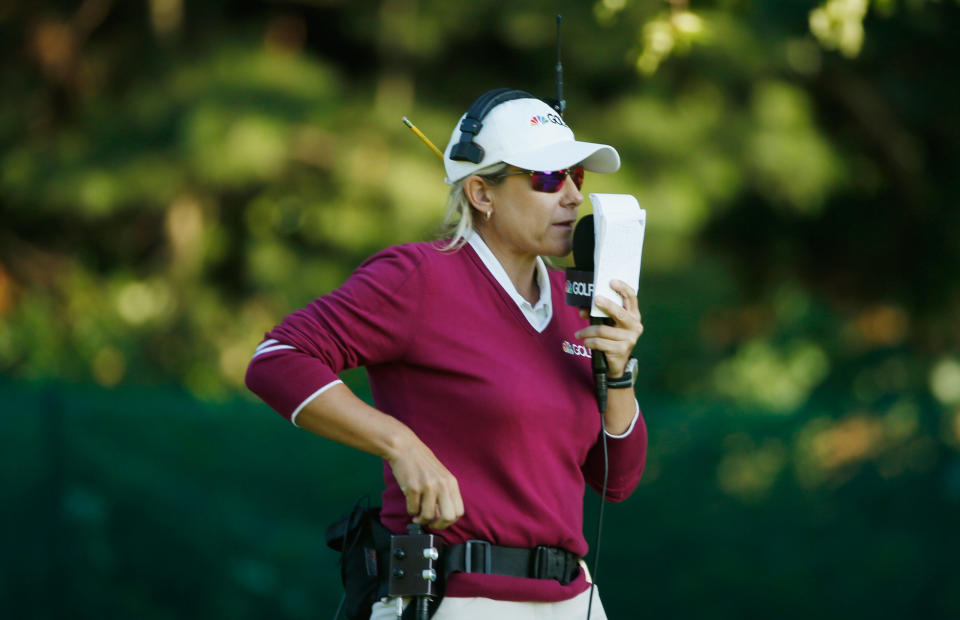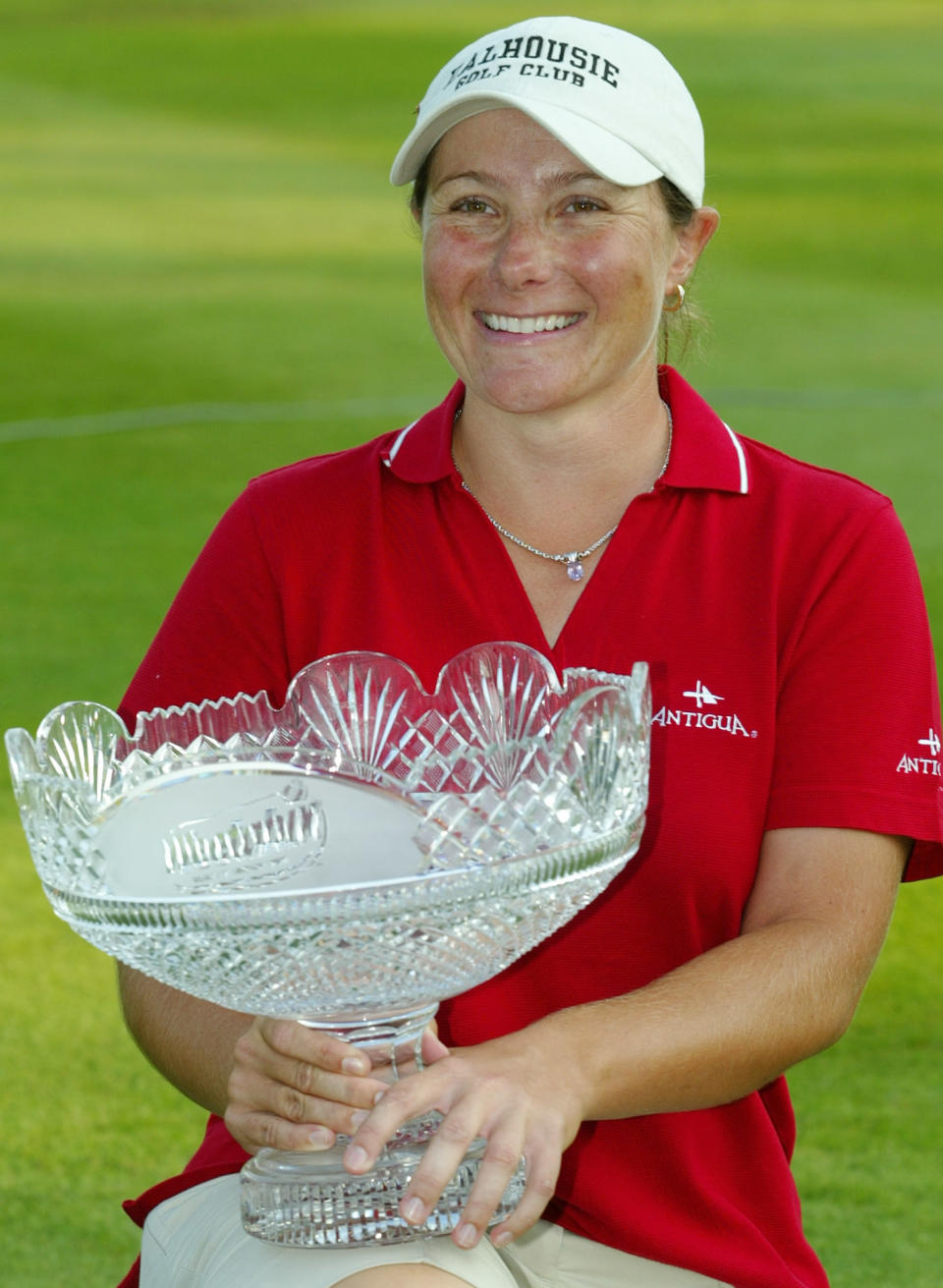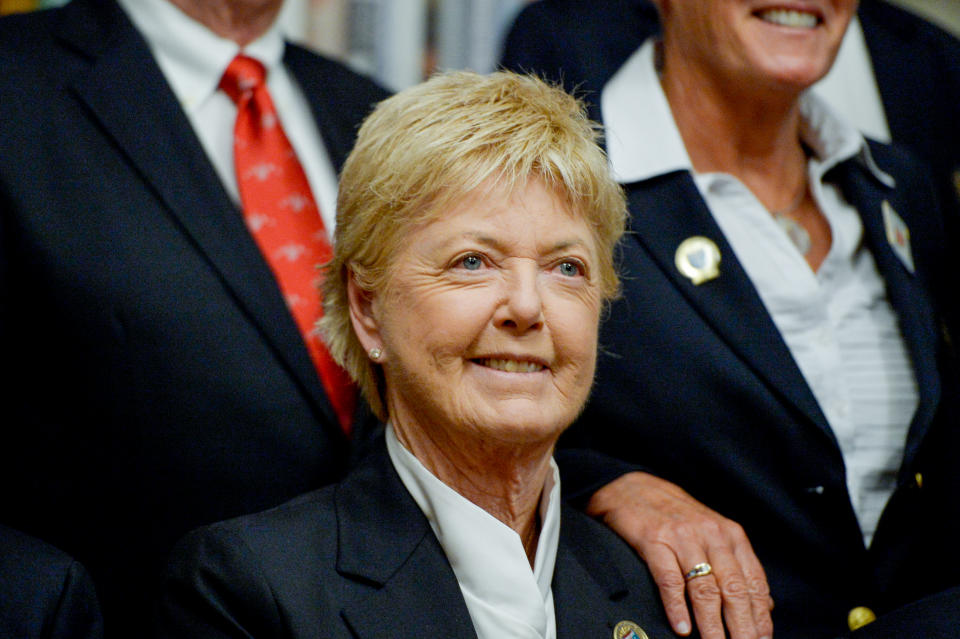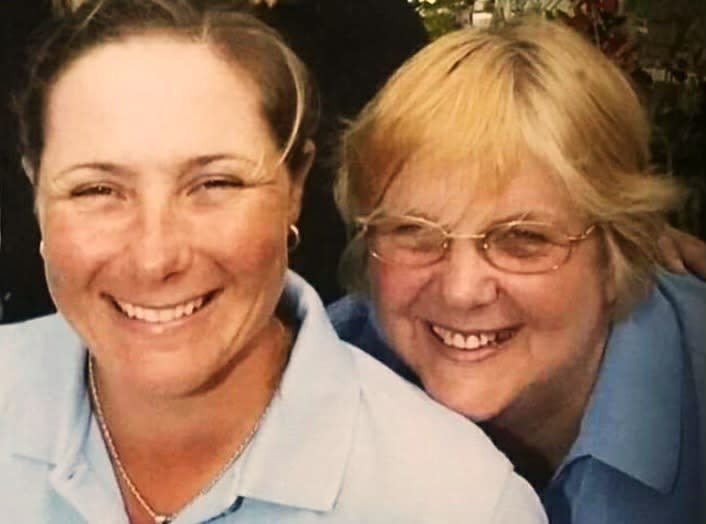Major winner and golf broadcaster Karen Stupples opens up about her terrifying and painful year

For Karen Stupples, the symptoms of Graves’ Disease came on nightmarishly fast at the start of 2023. First a hand tremor. Then a shakiness in her legs that felt like she’d been doing lunges for hours. There was a nervousness in her stomach, too, and a weakness so profound that she couldn’t lift a frying pan. Everything felt like it was moving faster than usual, even the words tumbling out of her mouth.
In late January, Stupples’ resting heart rate stayed around 150 for a full week. She went to the hospital.
“I’m not sure she got an answer that first trip,” said Jerry Foltz, Stupples’ partner who also works in golf broadcasting. “They thought she was diabetic and told her not to eat any carbs for two months.”
Three weeks later, Stupples was back at the same hospital, where she was ultimately diagnosed with Graves’ Disease, an autoimmune disorder of the thyroid, a butterfly-shaped gland in the front of the neck. Thyroid hormones control the way the body uses energy and impact nearly every organ in the body. Graves’ Disease causes the gland to make more thyroid hormones than is necessary, which speeds up the way the body functions, according to the National Institute of Diabetes and Digestive and Kidney Diseases, which estimates nearly 1 in 100 Americans are impacted by Graves’.
With the help of new medication, Stupples, an LPGA major winner who spent more than a decade on tour before getting into television, went back on the road to Arizona last spring for the LPGA Drive On Championship. She first went to Tucson to spend a few days with Foltz, who worked the LIV Golf event there, before driving north to Phoenix.
After dinner one night in the desert, Stupples felt shaky again and wound up back in the E.R., where there were concerns of a life-threatening thyroid storm. They kept her there for three days and diagnosed her with also having Thyroid Eye Disease. After an endocrinologist in Phoenix significantly bumped up Stupples’ antithyroid medication dosage, the couple took five days driving home to Florida rather than risk a temperature spike while in the air.
“When I was going through it, it literally felt like my life was ending,” said the 50-year-old Stupples of those early days with the disease. “I couldn’t see a pathway to feeling well again.”

England’s Karen Stupples holds the trophy following her victory in the Women’s British Open Golf tournament at Sunningdale, England, Sunday, Aug. 1 2004.
Desperate for any kind of resource that could offer hope, Stupples learned of Pat Bradley’s Graves’ diagnosis at the peak of her career. She gave the LPGA Hall of Famer player a call.
Bradley had won three of the four majors in 1986 and finished the season No. 1 on the money list. Two years later, however, she was 109th on the money list, and her scoring average was a shocking four strokes higher.
Bradley thought she was having a nervous breakdown, collapsing under the pressure of maintaining excellence. She was losing her hair and could barely hit a drive 200 yards. Bradley had so little strength in her legs, that when she bent down to read a putt, she couldn’t get back up.
“I thought the guys in the white suits were ready to escort me,” she said.
The paranoia ran so deep, that she’d leave a hotel at 4 a.m. to avoid being seen.

Pat Bradley attends the 2017 World Golf Hall Of Fame Induction Ceremony on September 26, 2017 in New York City. (Photo by Roy Rochlin/Getty Images)
During a layover in Dallas, after a particularly terrible tournament in Los Angeles, Bradley called Ronald Garvey, a local doctor she’d met during a pro-am, to talk about her symptoms. Garvey told her to leave the airport and come to his office immediately. She was soon diagnosed with Graves’ Disease, and at the hospital near Garvey’s office, took radioactive iodine to treat her hyperthyroidism.
Several months later, once Bradley had figured out the right dosage of meds, she was able to return to the LPGA. The following season she went back to that same L.A. stop at Rancho Park Golf Course and won the tournament. Bradley won nine of her 31 LPGA titles after the diagnosis, including the 1991 Rolex Player of the Year award and Vare Trophy.
“I thought my career was over,” said Bradley. “I didn’t know if I would ever recover from it.”
Listening to Bradley’s story comforted and emboldened Stupples, who was terrified about her own future. Stupples decided to take matters into her own hands and began searching for the best surgeon to remove her thyroid.
The search led her close to home in Tampa, Florida, where she filled out an online form for the Clayman Thyroid Center, the first interdisciplinary institute dedicated solely to the evaluation and surgical management of thyroid diseases and thyroid cancer.
The surgeon called Stupples that night and said, “We can help.” On May 3, Stupples had her thyroid removed, fully aware of the risk the procedure, which involves a separation of the vocal cords, posed to her voice.
“Within 24 hours of having my thyroid out I realized just how sick I was,” she said. “All of a sudden I felt my mood had lifted and I had a bounce back in my step that I hadn’t had for months trying to struggle through the illness.”
She took a month off to recover and dove next into trying to save her vision. Thyroid Eye Disease can result in bulging eyes, misaligned eyes and double vision. Stupples found a nearby specialist and began the long process of insurance approval to take Tepezza, the only FDA-approved medicine to treat Thyroid Eye Disease.
“They give you a long list of potential side effects,” said Stupples. “I suffer from really bad cramps. One of the side effects is it could make you go deaf. … You have to weight that out, do I want to see or do I want to hear?”
Now nearly through a series of eight infusions of a drug that’s literally saving her sight, Stupples says she feels more like herself than she has in months. She can once again do her work as an on-course reporter with a little bounce in her step.
Foltz gets emotional when he talks about how good his friends at the Golf Channel have treated Stupples throughout the process. At every crossroads, he said, she was assured that her health came first.
Looking back, Foltz realizes how much Stupples kept from him along the way to save him from worry.
“In hindsight now,” he said, “I’m very much aware of just how scared she was.”
Similarly, he kept a strong presence around her, so that she didn’t see the fear that he felt.

Karen Stupples and her mother Eileen (courtesy photo)
As Stupples began to get a handle on her physical health, however, a different kind of pain emerged. Her beloved mother Eileen died on July 9, the week of the U.S. Women’s Open at Pebble Beach. The day before Stupples was scheduled to fly to California, she instead rushed to take an overnight flight to London, and then drove straight to the hospital to stay by her mother’s side.
“I didn’t ever want her to be alone,” she said of their nights together.
Eileen was the generous mum who always read one more page at bedtime if her children asked. She sewed dresses for Karen’s sister Susan’s ballroom dances and fed the family sausages and mash as long as it took to save enough money to buy Karen a trombone.
“Whatever we wanted, if it was within her power to do,” said Stupples, “she would do.”

Stupples’ son Logan with his grandmother, Eileen (courtesy photo)
Angela Stanford split the 2023 season between competition and her work as an on-course reporter for Golf Channel. Knowing all that Stupples endured this year, Stanford, who lost her own mother Nan to cancer last year, said she didn’t know how her friend and colleague with the “super high golf I.Q.” navigated so well through the pain and the fear.
“I don’t know how she did it,” said Stanford. “I don’t know how she came on air, and she was a professional every single time.”
Because for Stupples, a woman whose fighting spirt is matched only by her kindness, there is no other way.

